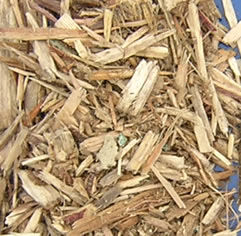Eos Estate Winery, based in the California Central Coast wine country, is one of the first energy-sustainable wine brands in the U.S. The winery has successfully adopted a “trifecta of solar energy solutions” to meet its energy needs. Eos Estate Winery utilizes three solar energy systems that include a 504 kWp photovoltaic (PV) tracking system which spans two acres, a 36 kWp, 204-panel fixed-tilt PV system to power the winery’s popular visitor center and a 100-panel roof-mounted solar thermal system that provides the winery’s heating needs. The solar panels were all provided by Hamburg, Germany based Conergy, which also has U.S. offices in Dever, Colorado.
In a statement released today, Jeff Hopmayer, the owner of Eos Estates Winery commented about his decision to incorporate  solar energy into his business. “Our primary motivator was to produce wines in a way that honors this beautiful coastal area and respects the environment. Conergy’s solutions enable Eos to optimize power generation throughout the day, avoiding the hours of shading confronted by standard systems set to peak hour production,” he noted. “These efficiencies — coupled with the government incentives associated with this project — made the economics of installing these remarkable earth-friendly systems viable,” Hopmayer said.
solar energy into his business. “Our primary motivator was to produce wines in a way that honors this beautiful coastal area and respects the environment. Conergy’s solutions enable Eos to optimize power generation throughout the day, avoiding the hours of shading confronted by standard systems set to peak hour production,” he noted. “These efficiencies — coupled with the government incentives associated with this project — made the economics of installing these remarkable earth-friendly systems viable,” Hopmayer said.
The winery’s environmental return on this project is expected to be substantial. According to Conergy, Eos’s solar initiatives will reduce CO2 emissions by over 21,000 tons – the equivalent of eliminating 68 million car miles from California’s freeways. The high return on investment is achieved in part by Conergy’s tracking system that is designed to maximize the winery’s daily solar energy harvest by following the sun’s trajectory from east to west. This type of system delivers up to 15% more energy than traditional fixed-mount solar technologies.
According to Conergy’s Project Developer Micheal DeSousa, “The rebates, tax incentives, accelerated depreciation, environmental benefits and brand cache that go with pursuing clean energy solutions in today’s marketplace have never been more appealing.”


 Georgia has become the third state to pass a bill requiring suppliers to make available an unblended gasoline grade for marketers who want to make their own ethanol fuels. The measure awaiting the signature of Republican Gov. Sonny Perdue would require refiners to supply a straight-run gasoline for blending by July 1 this year. Refiners also would be barred from interfering with a jobber’s right to blend alcohol or claim federal tax credits on blended fuel, and would have to amend their supply contracts to delete any ban on blend sales.
Georgia has become the third state to pass a bill requiring suppliers to make available an unblended gasoline grade for marketers who want to make their own ethanol fuels. The measure awaiting the signature of Republican Gov. Sonny Perdue would require refiners to supply a straight-run gasoline for blending by July 1 this year. Refiners also would be barred from interfering with a jobber’s right to blend alcohol or claim federal tax credits on blended fuel, and would have to amend their supply contracts to delete any ban on blend sales. The police department in Hoover, Alabama will soon be receiving wood-based ethanol to fuel their flexible fuel vehicles (FFVs). A Livingston demonstration plant, Gulf Coast Energy, will be producing the ethanol.
The police department in Hoover, Alabama will soon be receiving wood-based ethanol to fuel their flexible fuel vehicles (FFVs). A Livingston demonstration plant, Gulf Coast Energy, will be producing the ethanol.
 Officials with
Officials with  Both houses of Congress have now introduced a bill that would give consumers more choices at the pump.
Both houses of Congress have now introduced a bill that would give consumers more choices at the pump. An increasing number of university professors, scientists, researchers, and industry trade organizations have registered their opposition to the controversial proposal because they say incomplete and unproven modeling is being used to penalize renewable fuels.
An increasing number of university professors, scientists, researchers, and industry trade organizations have registered their opposition to the controversial proposal because they say incomplete and unproven modeling is being used to penalize renewable fuels.  Happy Earth Day, everybody!!
Happy Earth Day, everybody!! Sure, they might not be cast opposite stunning starlets such as Angelina Jolie or call for their closeup after jumping off a 30-story building in a spectacular stunt, but renewable energy sources, especially biodiesel and solar, are playing a starring role in Hollywood these days.
Sure, they might not be cast opposite stunning starlets such as Angelina Jolie or call for their closeup after jumping off a 30-story building in a spectacular stunt, but renewable energy sources, especially biodiesel and solar, are playing a starring role in Hollywood these days. While my friend
While my friend  With Wall Street still not recovered from the economic downturn and banks keeping a tight hold of the credit purses’ drawstrings, the next generation of biofuels producers could have a rough time getting going and staying going.
With Wall Street still not recovered from the economic downturn and banks keeping a tight hold of the credit purses’ drawstrings, the next generation of biofuels producers could have a rough time getting going and staying going.